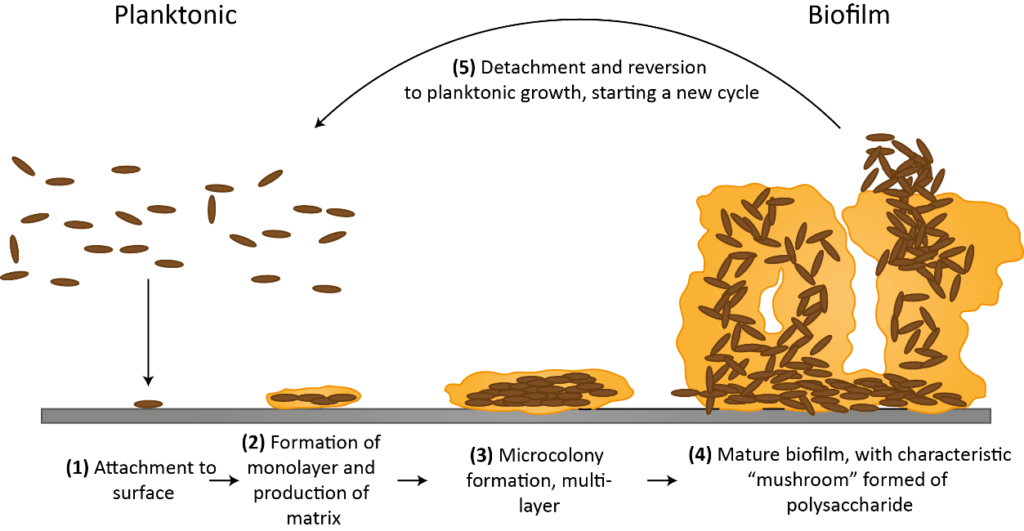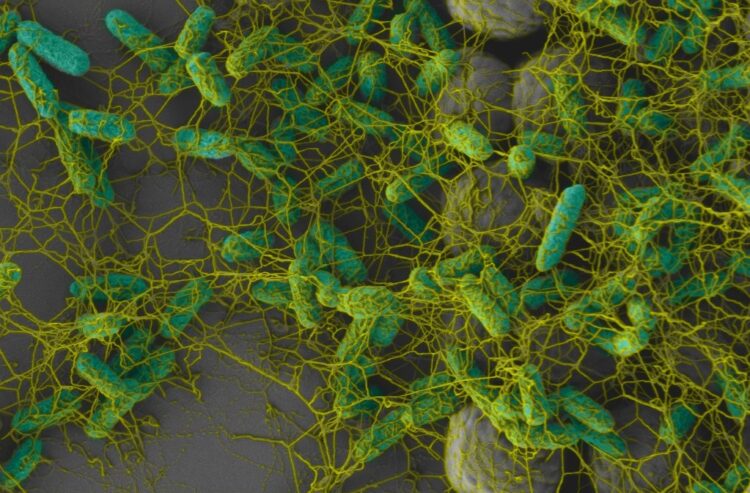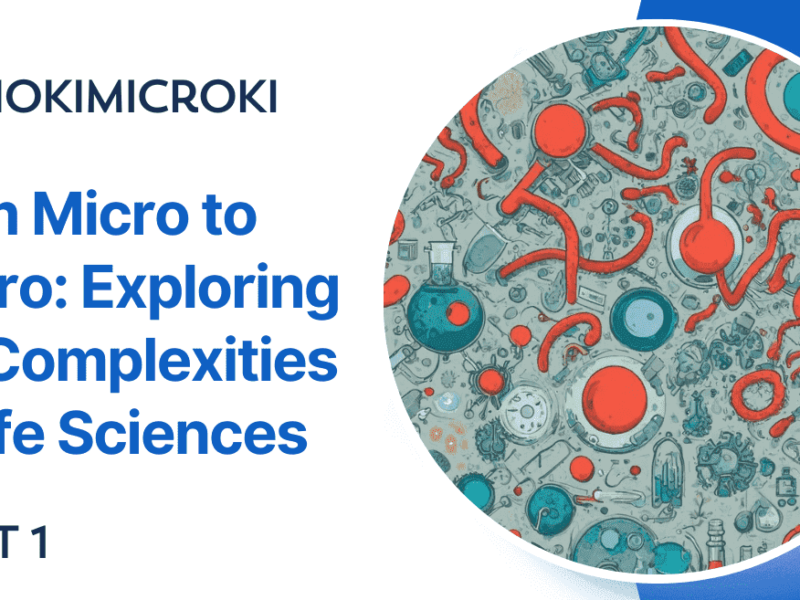Introduction–
Biofilm is a close association of cells to each other or to a specific surface forming a slimy layer. It is process where many like and unlike bacteria combine together to form a strong association which is difficult to break. This association is held tightly by extracellular polymeric substance (EPS), it acts like a glue which adhere bacteria to surface and maintains the structural integrity of the biofilm. Their association and unity give them strength to protect themselves from external factors like chemical, biological or mechanical damage. But it makes it difficult for us to brake it. Such biofilms are dangerous for human health and destructive for our property. To inhibit and kill such biofilm is one of the major problem before Microbiologists.
Biofilm was first discovered by Anton Van Leeuwenhoek (Father of Microbiology) on the surface of the tooth. Where he noticed the association of many cells to the surface of teeth.
Where bacteria forms a biofilm?
They can grow on biotic and abiotic surfaces and forms biofilm. It also grows on indwelling medical devices, industrial or portable water system piping, aquatic system and many more. The ideal place to form biofilm is at interphase of solid and liquid medium, it is the place of interaction where both the media interacts.
What factors affect biofilm formation?
- The biofilm formation is imitated when the bacteria find favorable attachment surface and starts binding as individually. The biofilm formation is affected by characteristics and composition of solid and liquid media and hydrodynamics of liquid media. The initial attachment is affected by bacterial motility (flagella and chemorecpetors) and environmental factors like temperature, pH, nutrient availability, etc. Hence non motile bacteria have less potential to form the biofilm. The role of temperature in biofilm formation can be witnessed
- Studies have found that rough and hydrophobic surface tends to attract bacteria and allow bacteria to get attach more easily. But this is not universally applicable. When the attachment surface is exposed to liquid medium, the ingredients of liquid medium may get attach to the attachment surface and changes the physiochemical properties of the surfaces. Such conditioning of surface affects the bacterial adhesion to the surface. Few bacterial species tend to attach hydrophobic surface also. Studies have found that biofilm are also associated with non-cellular particles like mineral crystal, corrosion particles, clay or silt.
- The flow of liquid media i.e. Hydrodynamics affects the formation and dispersion of the biofilm. The bacterial cells in liquid media behaves like particles and move along with flow. The rate of flow of liquid media affects growth rate, biofilm structure and shape and population of cells. Once the bacterial cells are in close proximity to surface i.e. around 20nm distance, the non covalent bond like electrostatic, hydrophobic and wander vaals forces participate and govern over hydrodynamic force. The domination of non covalent bond formation between bacterial cell and surface over hydraulic force enables to the initiate the attachment step.
- As mentioned in point 2, the hydrophobicity plays an important role in attachment and adhesion to surface. The non polar groups of bacterial cell and surface forms hydrophobic bonds and initiate attachment. Fimbriae, a hair like appendage is involved in the attachment process. The studies have found that fimbriae is rich in hydrophobic amino acids which interacts with hydrophobic groups of surface. The research has disclosed that higher the hydrophobic nature of bacterial cell, faster is the process of attachment. In Hydrophilic type of surface, bacterial Lipopolysaccharide and EPS participate in the attachment process.
Structure of Biofilm:
Biofilm is made from microbial cells and a matrix of Extra polymeric substance that holds the microbial cells together. The matrix (EPS) is made from carbohydrates and they are mostly polyanionic. The negatively charged polyanionic carbohydrates are found to get associated with positive ions like calcium and magnesium. The positive ions forms cross-linking with other polymers and provide its strength. The biofilm could be monolayer or multilayer and it consists of water channels which is used for transport and exchange water, nutrients and gases.
Steps of formation of Biofilm
- Attachment – The bacteria tend to bind or attach to favorable surface.
- Irreversible attachment – The bacteria attach gets attached firmly to the surface.
- Microcolony – The monolayer formation starts and bacterial cell produces matrices (EPS and lectin).
- Maturation – The microcolony starts forming multilayers of biofilm with the help of adhesion molecule..
- Dispersion – The cells associated with biofilm start detaching and reverse to planktonic growth. The released cells are free to attach at new surface and start the cycle again.

Antibiotic resistance –
Biofilm acts as a perfect niche for horizontal gene transfer that is through conjugation (It is the transfer of plasmid through sex pilli from donor bacteria to recipient). As the structure and architect of biofilm keep the cells in close proximity, it favors the conjugation process.
During conjugation, the bacteria transfer its antibiotic resistant plasmid to associated cells. Due to which the antibiotic resistant genes are shared at high rate and make the microbial population resistant. Such resistant biofilm are stubborn to kill.
Cell communication in biofilm-
In biofilm, the bacterial cell communicate with each other by Quorum sensing. The bacteria send the message by releasing signalling molecule. The recipient bacteria receives the message via receptors. The received message regulate the gene expression and control the protein synthesis. The constant communication between associated cells allows the bacteria to work as a team in all stages of biofilm formation.
References:
https://www.ncbi.nlm.nih.gov/pmc/articles/PMC2732559/
http://ronney.usc.edu/research/biophysics/Biofilms4Web.html
https://www.sciencedirect.com/science/article/pii/S0001868620306059
https://www.sciencedirect.com/science/article/pii/S002197971100364X



One thought on “Fundamentals of Biofilm”